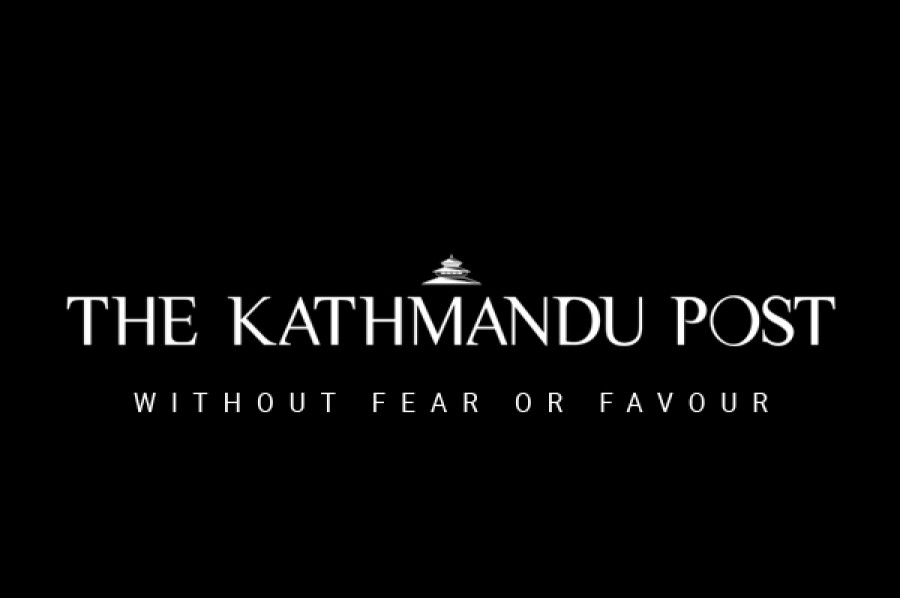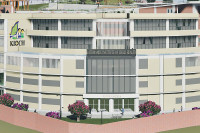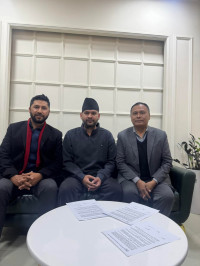Opinion
Surrogate Shangri-La
It is still not clear why tourists come to Nepal, but rebuilding heritage sites will definitely attract more of them
I have noticed a common fallacy in our response to the question of tourist identity and what constitutes the ‘tourist gaze’. The dwindling number of tourists in the aftermath of the big earthquake of April 25 has gripped the minds of not only those who are in the tourism business but also those who run the government, politics and social organisations. By sending positive messages to tourists that everything is all right in our part of the world, they have begun campaigns to convince travellers to come to Nepal. The new post-disaster lingo has somewhat enhanced the repertoire of tourism discursivity in Nepal. However, such tourism discursivity is at odds with the devastated heritage and geographical sites.
Relax and meditate
While in Thamel recently, I was suddenly drawn by a noise created by the sounds of traditional drums, cymbals, flutes and other instruments that I could not distinguish in the wantonly thrown orchestra for the occasion. Tridevi Marga is known for such occasional ‘big bash’ as told to me by an organiser. It was interspersed with some erstwhile revolutionary songs that were sung during the loktantric movements. That show was uniquely organised around the theme of bringing in more tourists. But the message was overtly political. The mood was celebratory, which, according to one organiser, was necessary to convince the few tourists who are staying in Thamel that the mood of festivity is strong here. Then they could carry that message home, to the metropolises across the world, places from where most tourists come. Other organisations and cultural groups and hotel associations are also giving attractive discounts to lure tourists. I think these are perfectly logical steps taken with the hope of maintaining a regular flow of travellers. But there is a deep misunderstanding in Nepal about the nature and identity of tourists, and the very phenomenon of tourism.
Just before the earthquake, I was invited to be a principal speaker at a meeting attended by businessmen, political leaders and tourism business people and literary writers. The theme of the programme was the promotion of spiritual tourism in Nepal. The crux of the arguments presented by the organisers was that tourists should be sent to relax, meditate and possibly to sleep when they come here. Such an effort would attract rich tourists bogged down by the materialistic pressures back home. The conclusions were a little naïve.
Why do they come?
Religious tourism or travel is not a new phenomenon. Most of the religious tourists who come to Nepal are Indians. How and when they come are all fixed beforehand. There is little that people in the tourism industry can do to make religious tourists spend the money hidden in their saffron bags. The other interesting thing is that the organisers of such meetings and seminars want tourists from huge metropolises across the world to come as spiritualists looking for yogic relaxation. On the contrary, many argue that such tourists come to Nepal only for pleasure.
Many seem to have a grave misunderstanding about who tourists are and why they come to Nepal. Tourists, especially from the Western countries, have a history of visiting Nepal for physical and spiritual—not just religious—reasons. Similarly, the reason why tourists come to Nepal or to any other land is still not clearly understood. All one can do is to create a space where the hosts and the tourists interact. A short piece is not enough even to list the principal issues in tourism. Equally unexplored is the psyche that has brought tourists to this country in the first place. One rebellious academic named Thomas Richards’s observation made in his book The Imperial Archive (1993) reminds us about one unexplored psyche of the tourists. He says, Nepal has become a surrogate Shangri-La, after the original was lost. He argues that tourists started coming here in search of ‘total knowledge’. What is that total knowledge is difficult to explain, but we should be clear about one thing—we do not know in clear terms what will bring tourists to Nepal.
Rebuild heritage sites
One thing is certain. Nepal’s political noise definitely does not attract tourists. But a few hard facts have to be repeated. Heritage sites are definitely objects that attract them. The devastation of the important heritage sites should be restored with the help of experts and with Unesco’s active participation. The artists and artisans, who restored them every time they were damaged by a quake in the past centuries, are very much there. The tourism industry has assured thousands of them to stay in their business. The skills of those people should be put to use.
The other objects of tourists’ attraction are the Himalayan valleys and mountains that have shifted. We have seen this process both before and more after the earthquake. People who rely on tourism for livelihood live in different geographical zones and urban areas. But the government has never been so tourism-savvy. It has done little to make the cities and countryside friendly for tourists.
Some Nepali geographers’ concept of tourism is a little different. They do not see that Westerners began visiting Nepal only from the 60s or the 70s. So they are equally sceptical about the volume of economic boost that tourism provides. But in this phase of post-quake construction, instead of making noise that is incomprehensible and meaningless to the foreign visitors, Nepal’s responsible agencies should develop concrete schemes for the restoration of the damaged heritage sites and develop long-term plans for ecological tourism. Finally, we should not forget that individuals, scholars and academics, writers and freaks who have come to Nepal for studies and other purposes at different times and have played a great role in introducing Nepal to the world outside. So it is time to seek their suggestions too.




 16.12°C Kathmandu
16.12°C Kathmandu









%20(1).jpg&w=300&height=200)

